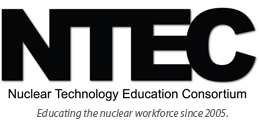N19: Primary Circuit Materials & Manufacturing
This unit aims to:
Explain how welded joints influence (and can limit) the through-life structural performance of nuclear components.
– Introduce the welding, cladding and near-net shape manufacturing processes that are relevant to the manufacture of primary circuit components in pressurised water reactors.
– Review basic concepts of welding metallurgy together with factors that affect the weldability of materials that are relevant to primary circuit components.
– Describe non-destructive examination techniques and how they can be applied to detect the presence of common weld/manufacturing defects.
– Identify and review trends in manufacturing practice for primary circuit components in pressurised water reactors.
Brief Description of the Unit
This unit provides a comprehensive overview of the welding and cladding processes that are relevant to the fabrication of primary circuit components in a pressurised water reactor. Emerging near-net shape manufacturing processes are also introduced. The physics of heat source-material interactions is covered for key welding processes, together with an overview of the working principles and necessary equipment. The metallurgy of welding is also covered, and specific considerations for primary circuit materials are explored. Links between manufacturing choices and through-life structural performance are made through considering the factors that affect the development of the mechanical properties of welds, residual stresses and distortion, and common weld defects. Strategies for inspection and quality assurance are outlined and related to the requirements in relevant engineering codes and standards. Learning is reinforced through the consideration of case studies that have received considerable attention in the engineering literature. Finally, emerging trends in manufacturing practice are highlighted.
Intended Learning Outcomes
| Describe the principles of operation for welding processes that are relevant to nuclear manufacturing, including the main characteristics and associated advantages and disadvantages for each process, and explain relevant methods of process control. |
| Apply principles of welding metallurgy and combine them with an understanding of welding process technology to qualitatively predict features of the resulting microstructures and the resulting variations in mechanical properties across welded joints. |
| Describe the concept of weldability and use it to specify the elements of a suitable heat treatment schedule for a welded joint. |
| Evaluate and compare welding procedures that involve different welding processes and weld pass sequences in regard to the development of residual stresses and distortion. |
| Select appropriate non-destructive evaluation techniques for welded and clad components based on an understanding of the defects that can form with different welding processes and weld configurations and justify the choices that are made. |
| Describe key requirements in engineering codes and standards that apply to the manufacture and inspection of pressure retaining components in nuclear plant and explain their significance for nuclear manufacturing. |
